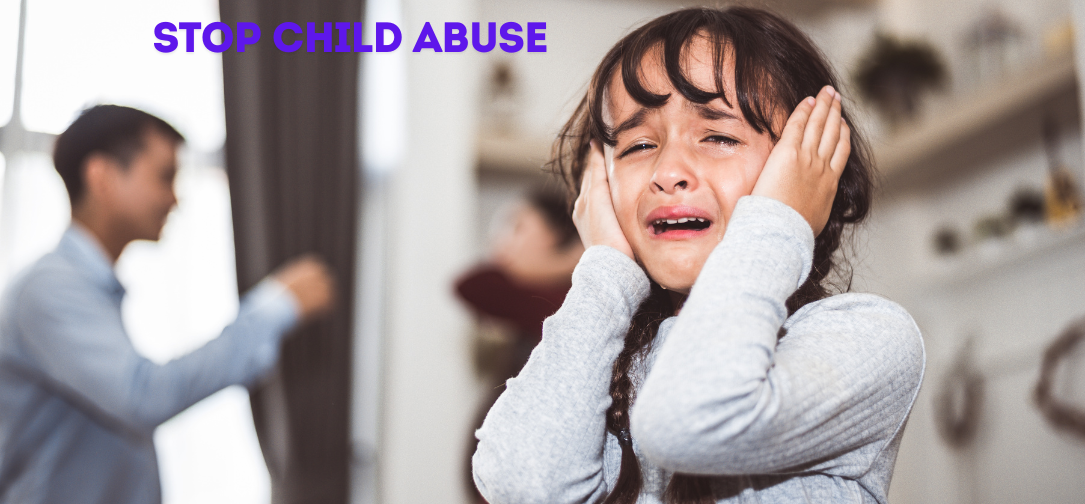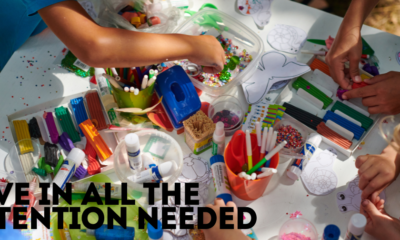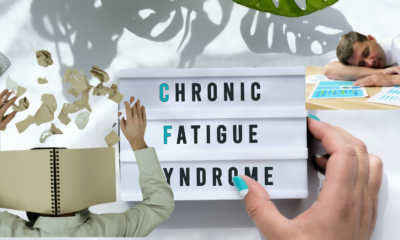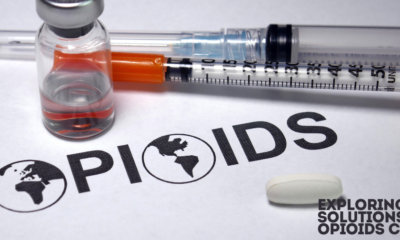Public Health
Child Abuse and Neglect: Recognizing and Preventing Harm

Child abuse and neglect represent some of the most severe and pervasive social problems that continue to plague societies worldwide. Each year, millions of children are subjected to various forms of abuse, including physical, emotional, sexual, and neglect. These traumatic experiences leave scars that may last a lifetime, impairing their emotional, psychological, and physical well-being.
Child abuse and neglect are not confined to any particular culture, ethnicity, or socio-economic status. They occur in both developing and developed nations, in rich and poor families, in rural and urban areas, and across all racial and religious lines. Understanding the scope, causes, and consequences of child abuse is critical to combating it, and preventing these atrocities demands a multi-disciplinary, multi-stakeholder approach that includes parents, educators, healthcare professionals, law enforcement, and the community at large.
Defining Child Abuse and Neglect
Child abuse and neglect refer to any act or failure to act by a parent, caregiver, or another person in a position of responsibility that results in actual or potential harm to a child. These acts can take several forms, each with its unique characteristics, consequences, and implications for the child’s development.
Physical Abuse: This type of abuse occurs when a child is physically harmed or injured by a caregiver. It includes hitting, beating, shaking, burning, or any other form of violent behavior that causes physical pain or injury. The visible signs of physical abuse might include bruises, cuts, fractures, or burns, but the psychological effects, such as fear, anxiety, and a sense of powerlessness, can be equally damaging.
Emotional Abuse: Unlike physical abuse, emotional abuse might not leave visible marks but can be equally destructive. Emotional abuse involves actions or behaviors that harm a child’s emotional and psychological well-being, such as verbal abuse, humiliation, intimidation, or rejection. It can also involve isolating the child, withholding affection, or creating an environment filled with fear and instability. Over time, emotional abuse can erode a child’s self-worth and hinder their emotional development.
Sexual Abuse: This involves engaging a child in sexual activities, whether through force, coercion, or manipulation. Sexual abuse may include direct physical contact, such as molestation or rape, or non-contact abuse, such as exposing a child to pornography or inappropriate sexual discussions. Sexual abuse can have devastating psychological effects, leaving the victim with deep-seated trauma, trust issues, and difficulty forming healthy relationships.
Neglect: While physical and emotional abuse are active forms of harm, neglect is often characterized by a lack of action. Neglect occurs when a caregiver fails to provide for the basic physical, emotional, or educational needs of a child. This could involve failing to provide adequate food, shelter, medical care, or supervision. Neglect can also manifest as emotional neglect, where a caregiver fails to provide emotional support, love, or nurturing. The effects of neglect, although more insidious, can be just as harmful as overt abuse, often leading to developmental delays, attachment issues, and long-term emotional difficulties.
Prevalence of Child Abuse and Neglect
Accurately estimating the prevalence of child abuse and neglect is challenging due to underreporting, differences in definitions across cultures, and the hidden nature of abuse. However, global studies suggest that the problem is widespread. According to the World Health Organization (WHO), approximately 1 billion children, or half of all children in the world, are victims of violence annually. In the United States alone, Child Protective Services (CPS) receives millions of reports of child abuse each year, with an estimated 674,000 children determined to be victims of maltreatment in 2019.
Globally, certain risk factors may increase the likelihood of child abuse, including poverty, substance abuse, parental mental health issues, and social isolation. Cultural factors also play a role; in some societies, corporal punishment is normalized, making it harder to distinguish between discipline and abuse. Additionally, economic instability, political unrest, and natural disasters may exacerbate the stress on families, contributing to a higher incidence of abuse and neglect.
Impact of Child Abuse and Neglect
The effects of child abuse and neglect are profound and can have lasting consequences for the victim’s physical, emotional, and social development. These effects can vary depending on the type and severity of the abuse, the child’s age and developmental stage, and the support systems available to the child.
Physical Effects: Physical abuse can result in immediate injuries, such as bruises, broken bones, or burns. In extreme cases, it can lead to death. Beyond the immediate physical harm, abuse can also have long-term effects on a child’s health. Victims of abuse are more likely to suffer from chronic health conditions, including heart disease, obesity, and asthma. Neglect, too, can have severe physical effects, particularly if the child is deprived of proper nutrition, healthcare, or safe living conditions.
Psychological and Emotional Impact: One of the most profound effects of abuse is the emotional and psychological harm it causes. Children who experience abuse may suffer from anxiety, depression, and post-traumatic stress disorder (PTSD). They may also struggle with self-esteem and have difficulty trusting others. In some cases, abused children may engage in self-harm or develop suicidal ideation. The emotional scars of abuse often persist into adulthood, affecting the individual’s ability to form healthy relationships, maintain employment, or cope with stress.
Cognitive and Developmental Effects: Abuse and neglect can significantly impair a child’s cognitive development. Children who experience abuse may have difficulty concentrating, learning, and performing well in school. Neglect, particularly in the early years, can lead to developmental delays and impairments in language, motor skills, and intellectual functioning. These developmental challenges can have long-lasting effects on the child’s academic achievement and future opportunities.
Behavioral Consequences: Victims of child abuse may exhibit a range of behavioral issues, including aggression, delinquency, substance abuse, and risky sexual behavior. These behaviors often arise as coping mechanisms for the trauma they have experienced. Children who have been abused may also have difficulty regulating their emotions and may be more prone to anger, irritability, and mood swings. In some cases, they may reenact their experiences by becoming abusive themselves, perpetuating the cycle of violence.
Social Consequences: Child abuse and neglect can hinder a child’s ability to form healthy social relationships. Abused children may struggle to develop trust in others, leading to social withdrawal, isolation, or difficulty forming close friendships. They may also have trouble relating to authority figures, which can cause problems in school or later in the workplace. In the long term, abused children are more likely to experience unemployment, poverty, and social marginalization.
Recognizing the Signs of Child Abuse and Neglect
Recognizing the signs of child abuse and neglect is essential for early intervention and prevention. While the signs of abuse can vary depending on the type and severity, some general indicators include:
Physical Signs: Unexplained injuries, such as bruises, burns, fractures, or cuts, may indicate physical abuse. In some cases, the injuries may be in various stages of healing, suggesting ongoing abuse. Children may also exhibit signs of poor hygiene, malnutrition, or untreated medical conditions, which could be indicative of neglect.
Behavioral Changes: Sudden changes in behavior, such as aggression, withdrawal, or extreme fearfulness, can be signs of emotional abuse or trauma. Children who are sexually abused may display age-inappropriate sexual behavior or knowledge. Other behavioral indicators include difficulty concentrating, frequent absences from school, or running away from home.
Emotional Signs: Children who are emotionally abused or neglected may appear anxious, depressed, or excessively fearful. They may struggle with low self-esteem and have difficulty forming healthy relationships with peers or caregivers.
Developmental Delays: Children who have been neglected may experience delays in their physical, cognitive, or emotional development. They may have difficulty meeting developmental milestones, such as walking, talking, or socializing with peers.
Risk Factors for Child Abuse and Neglect
Several risk factors may increase the likelihood of child abuse and neglect. These risk factors can be grouped into three main categories: parental, child, and environmental factors.
1) Parental Risk Factors:
- Substance Abuse: Parents or caregivers who struggle with drug or alcohol addiction are more likely to engage in abusive or neglectful behaviors. Substance abuse impairs judgment and increases impulsivity, making it harder for parents to provide proper care for their children.
- Mental Health Issues: Parents with untreated mental health conditions, such as depression, anxiety, or personality disorders, may have difficulty coping with the stresses of parenthood and may be more prone to abusive behaviors.
- Domestic Violence: Children who witness domestic violence are at higher risk of experiencing abuse themselves. The chaotic and violent environment created by domestic violence can lead to physical harm, emotional trauma, and neglect.
2) Child Risk Factors:
- Disabilities: Children with physical, developmental, or intellectual disabilities are at a higher risk of abuse and neglect. These children may be more dependent on caregivers for their daily needs, making them more vulnerable to exploitation or harm.
- Behavioral Issues: Children with challenging behaviors, such as aggression, hyperactivity, or defiance, may be more likely to experience abuse, particularly if their caregivers lack the skills or support to manage their behavior.
3) Environmental Risk Factors:
- Poverty and Economic Stress: Families living in poverty face numerous challenges, including financial stress, inadequate housing, and limited access to healthcare and education. These stressors can increase the likelihood of abuse or neglect, as parents may struggle to provide for their children’s needs or may become overwhelmed by their circumstances.
- Social Isolation: Families who are socially isolated, with little support from extended family or community, may be at higher risk for abuse and neglect. Without a network of support, parents may have fewer resources to cope with the stresses of raising children and may be more likely to engage in abusive behaviors.
Prevention and Intervention
Preventing child abuse and neglect requires a comprehensive approach that addresses the underlying risk factors and promotes a culture of support, protection, and care for children. There are several strategies for preventing abuse and intervening when it occurs:
Education and Awareness: Raising awareness about the signs of child abuse and neglect is critical for early intervention. Parents, teachers, healthcare professionals, and the community must be educated on how to recognize the warning signs of abuse and what steps to take to protect a child. Public awareness campaigns and community programs can play a vital role in spreading knowledge and encouraging reporting.
Parenting Support Programs: Providing parents with the tools and resources they need to raise their children in a healthy and nurturing environment can reduce the risk of abuse. Parenting programs, support groups, and counseling services can help parents develop positive parenting skills, manage stress, and cope with the challenges of parenthood. For families facing specific challenges, such as substance abuse or mental health issues, targeted interventions can provide additional support.
Strengthening Child Protection Systems: Governments and organizations must work together to create robust child protection systems that can effectively respond to reports of abuse. This includes training professionals, such as teachers, doctors, and social workers, to recognize the signs of abuse and ensuring that they know how to report concerns. Additionally, child protection agencies must have the resources and authority to intervene in cases of abuse, remove children from harmful environments, and provide them with the necessary care and support.
Community Involvement: Creating safe, supportive communities is essential for preventing child abuse and neglect. Communities can play a role in supporting families by providing resources, such as affordable childcare, healthcare, and education. Community organizations can also offer outreach programs, support groups, and social services that help families cope with stress and provide children with a safe, nurturing environment.
Legal Measures: Governments must have clear laws and regulations in place to protect children from abuse and neglect. This includes ensuring that child abuse is a criminal offense, establishing reporting mechanisms, and providing legal recourse for victims. Laws should also prioritize the best interests of the child in cases of custody, adoption, and foster care, ensuring that children are placed in safe, supportive environments.
Conclusion
Child abuse and neglect are grave violations of a child’s fundamental rights to safety, protection, and care. Recognizing the signs of abuse, understanding the risk factors, and taking action to prevent harm is crucial for the well-being of children and the future of society as a whole. It requires the combined efforts of parents, educators, healthcare professionals, law enforcement, community organizations, and policymakers.
The fight against child abuse and neglect is ongoing, but with education, awareness, and strong social support systems in place, we can create a world where every child is safe, valued, and given the opportunity to thrive. Prevention is not only possible but essential, and the cost of inaction is too high to bear. By working together, we can ensure that children grow up in environments where they are free from harm, nurtured with love, and empowered to reach their full potential.
-

 Food8 hours ago
Food8 hours agoHow to Lose Weight Fast: The Best Drink Recipes for Rapid Results
-

 Education8 hours ago
Education8 hours agoUnlocking the ASUS Student Discount on Reddit: A Comprehensive Guide
-

 Banking5 hours ago
Banking5 hours agoUnlock Your Financial Potential with SoFi High-Yield Savings
-

 News29 minutes ago
News29 minutes agoUnfiltered: Behind the Headlines with Page Six


































